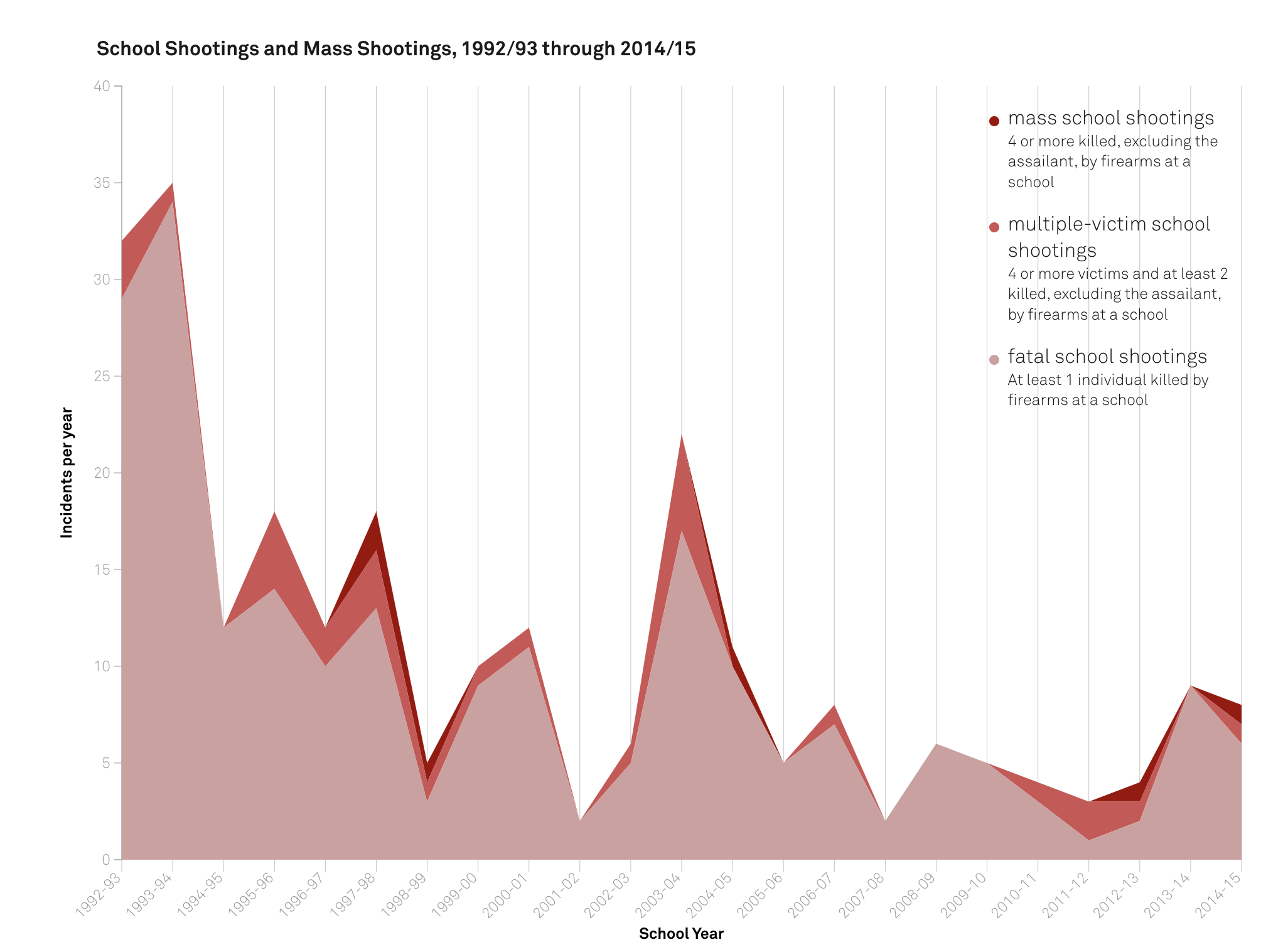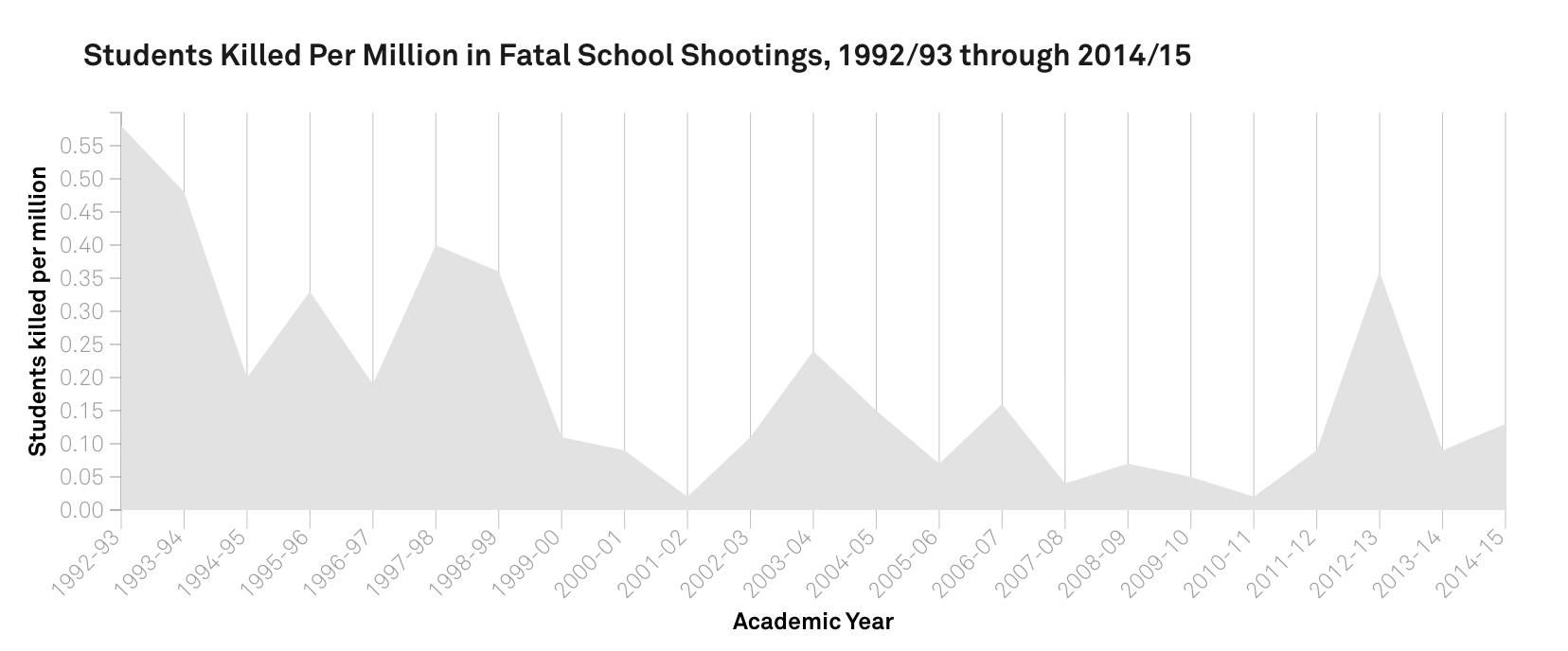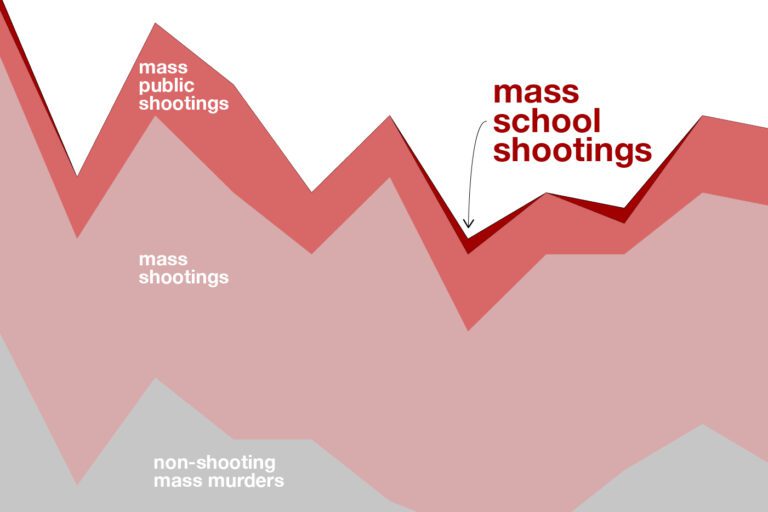This month's deadly school shooting in Parkland, Florida, has sparked national outrage and calls for action on gun reform. But while some policies may help reduce gun violence in general, it's unlikely that any of them will prevent mass school shootings, according to James Alan Fox, the Lipman Family Professor of Criminology, Law and Public Policy at Northeastern.
Since 1996, there have been 16 multiple-victim school shootings or incidents with 4 or more victims and at least 2 gun deaths, excluding the shooter.
Of those, 8 are mass shootings or incidents with 4 or more deaths, excluding the shooter.
“It's not an epidemic”
Mass school shootings are incredibly rare events. In research published later this year, Fox and doctoral student Emma Fridel found that on average, mass killings occur between 20 and 30 times a year, and about one of those incidents on average takes place in a school.
Fridel and Fox used data collected from USA Today, the FBI's Homicide Supplemental Report, the Congressional Research Service, the Gun Violence Archive, the Stanford Geospatial Center and Stanford Libraries, Mother Jones, Everytown for Gun Safety, and a NYPD active shooter report.
Their research also finds that shootings involving students have declined since the 1990s.


Four times as many children were killed in schools in the early 1990s as today, Fox said.
“There is not an epidemic of school shootings,” he said, adding that more children are killed each year by drowning in swimming pools or bike accidents. There are about 55 million school students in the United States, and on average over the past 25 years, about 10 students per year have been killed in school shootings, according to research by Fox and Fridel.


Fox said, however, that some policy changes aimed at reducing school shootings and gun violence in general certainly have value. Banning bump stocks and raising the purchase age for rifles from 18 to 21 are good ideas and may lead to a reduction in overall gun violence, he said. But he doesn't think those measures will prevent school shootings. “What you have to remember is that these are extremely rare events, and no matter what you can come up with to prevent it, the shooter will have a solution,” Fox said, adding that in the past 35 years, there have only been five cases in which someone between the ages of 18 and 20 used a rifle in a mass shooting.
Fridel said increasing mental health resources for students is another strategy that could improve school safety, calling it a critical need that has historically been overlooked. He also said the US is facing a desperate shortage of guidance counselors. In 2014-15, the ratio of students to school counselors was 482 to 1; according to the American School Counselor Associationnearly double the agency's recommended ratio.
“You might have students in a very large school who are troubled, but who basically fly under the radar because you have one guidance counselor for 400 students,” Fridel said.
Should schools become fortresses?
After the Columbine High School shooting in 1999, schools across the country began holding active shooter drills in which they huddled together in a corner or hid under their desks. Such drills — which can involve someone walking around pretending to shoot students — can be very traumatic, Fridel said, and there's no evidence they help protect students. “These measures only serve to alarm students and make them think it's normal,” he said.
Other security precautions, such as installing metal detectors and requiring ID for entry, have also been shown to be ineffective in previous school shootings.
Fridel pointed out a few examples.
- In 1989, a gunman killed five and injured 32 elementary school children in Stockton, California, targeting them on the playground.
. - in 2005, a 16-year-old killed seven people at his high school in Minnesota by walking through the front door metal detector and fatally shooting a security guard.
. - In a 1998 shooting in Jonesboro, Arkansas, two college students pulled a fire alarm and began shooting people as they walked out into the parking lot, killing five and injuring 10 others.
In addition to being ineffective, Fox said increased security measures of this nature can do more harm than good. He called the proposal to arm teachers “absurd” and “over the top.” “It surrounds you with safety, you have to keep an eye on your back,” Fox said. “This can actually instill fear, not alleviate it.”



